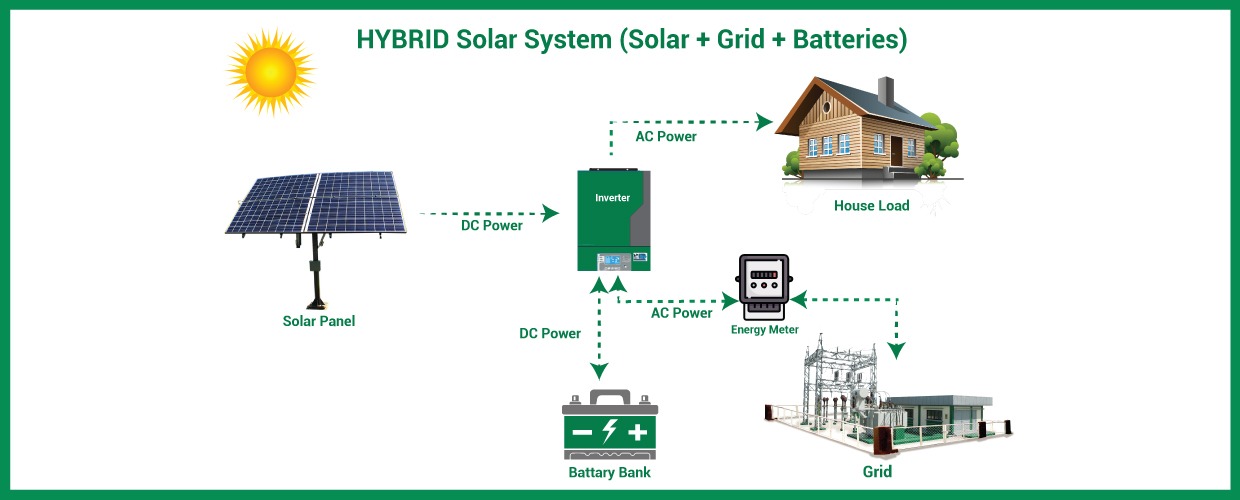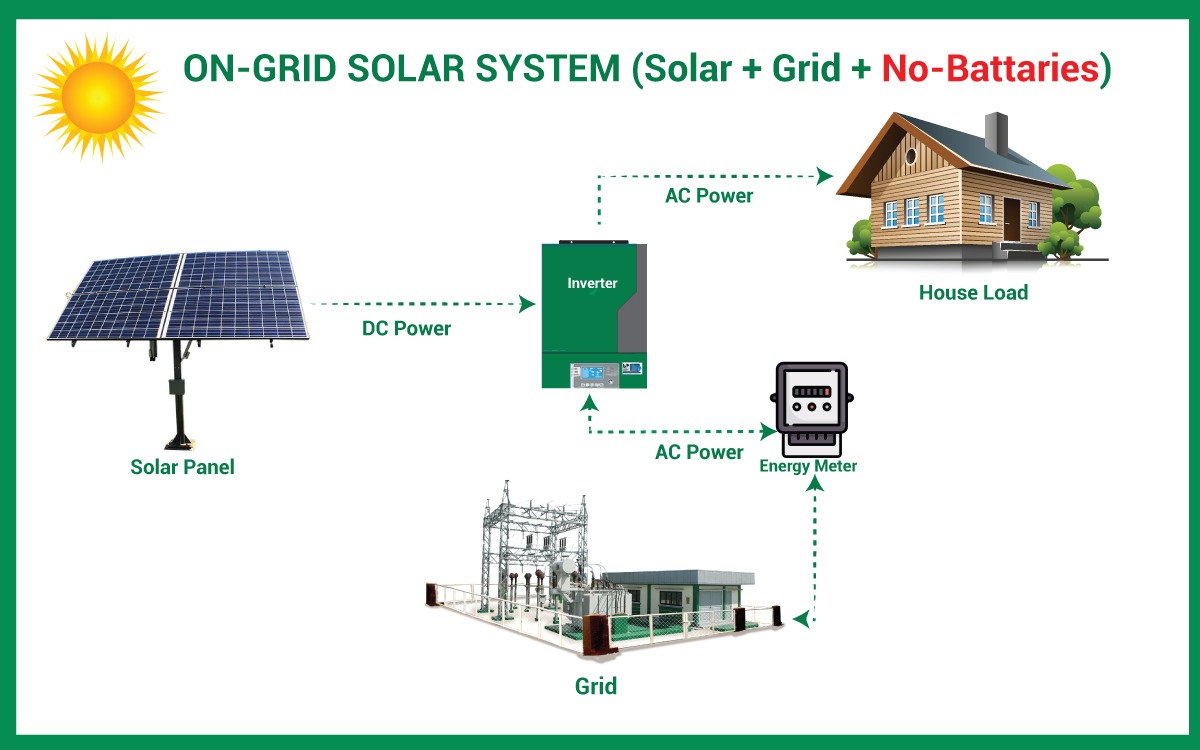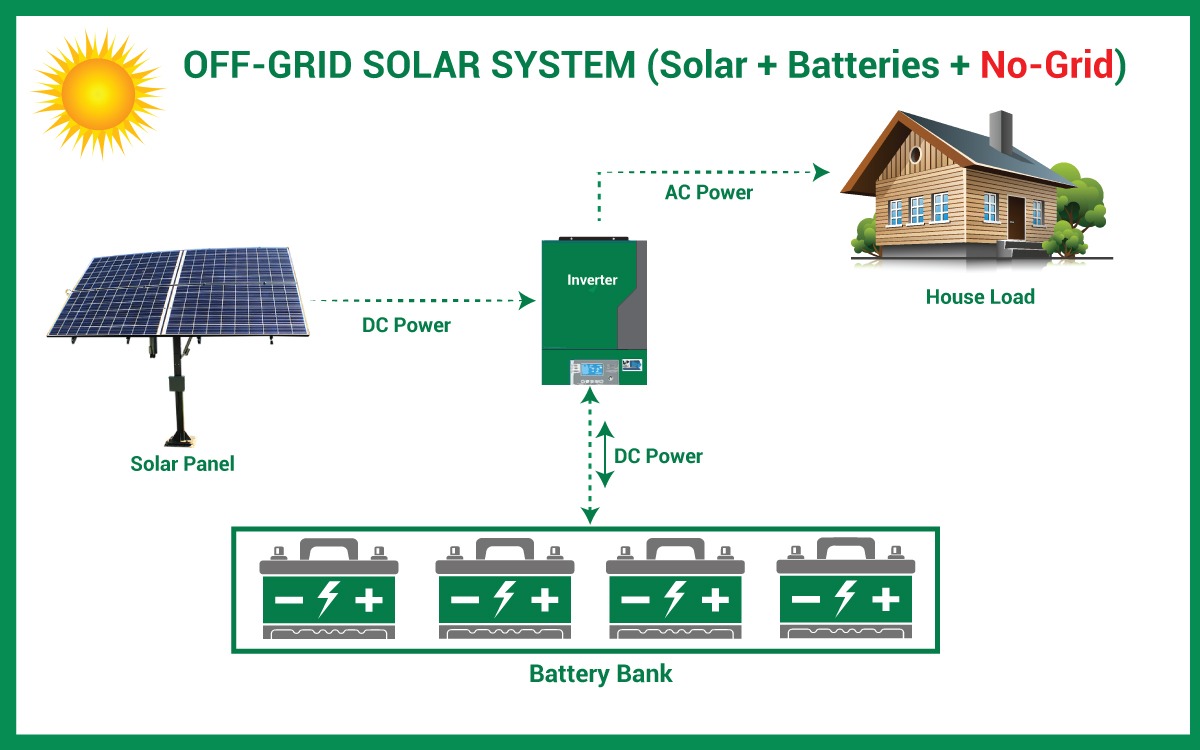HYBRID SOLAR SYSTEM (Solar + Grid + Batteries)
A hybrid solar system is the most popular system especially for the residential segments due to its capability of not only providing savings but to avoid electricity blackouts as well since this system includes the batteries to store energy (from solar or solar plus utility) which can be used during peak hours of saving or/and in case of electricity blackouts.
The option of net metering; i.e. selling back excess energy to the grid also remains available in a Hybrid system.
The DC power generated by solar panels is converted to AC power by the inverter to feed the connected load through a network of distribution boards of wires and to keep charging the batteries also in parallel.
During nighttime or low generation from the solar system, the load can be fed from the grid, and in case of no solar and no grid, the load can be fed from the batteries to avoid any blackout. Option or selling back the excess energy to the grid during the day and flexibility of using stored energy in batteries during peak-tariff timings maximizes the savings for the clients.




